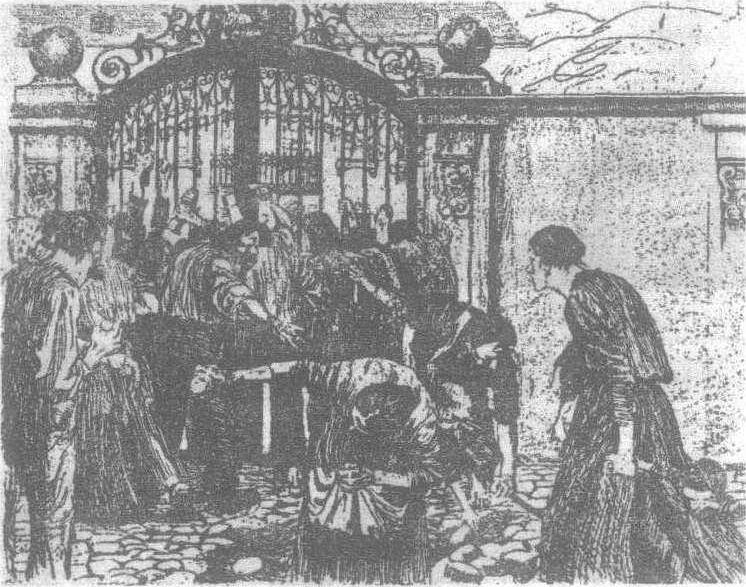铜版画欣赏Tongbanhua xinshang
铜版画起源于欧洲,至今已有近600年历史。铜版画完全是阴刻线条,采用凹版印刷在铜版机上压印,便获得具有立体感的清晰流畅、精细优美的线条。具有金属版雕镌产生的力与美和丰富多变、深沉浑厚的色调层次,十分优美。凹版印刷是用手掌和纱布涂墨擦版,把油墨涂擦挤压入凹下的线条中,将版面上多余的油墨擦掉,根据需要适当保留少量油墨,经过凹印机印刷而产生多样的效果。铜版画的技法主要有干刻、腐蚀、飞尘和美柔汀。干刻法是用锋利尖锐的钢针和刮刀直接在金属版面上刻划,因而在干刻凹线的两边和凹面的周围产生突起的金属毛刺成锯齿状,擦墨印刷后,线条含蓄粗犷浑厚而有渲染意味。美柔汀即砂目版磨刮法,色调深沉丰富,具有一种神秘优美的效果。方法是在版面上用平行、垂直、交叉斜线刻制成细密乌黑的网线版,或是用摇点刀使版面产生密集的麻点砂目版,然后在这浓黑如绒的美柔汀底版上依浓淡层次再磨刮出各种柔美的图形。如同低调照片的效果。线条腐蚀法是铜版画中最常用的技法,因其刻制手段轻松自如而得到迅速发展,许多著名的艺术家都曾用蚀刻法创作了不少铜版画艺术珍品流传于世。蚀刻法是利用腐蚀酸液的强弱和腐蚀时间的长短来达到画面线条的粗细深浅和色调的丰富层次。也可利用酸液直接在版面上随意描画和自然流淌产生意外的腐蚀斑痕和趣味,增加了腐蚀技法的美感。飞尘法是在金属版上撒落细小的松香粉末,经加热溶化形成均匀的点子,然后再分层次腐蚀。画面效果如同雪花飞扬的粗细白点,均匀细密,朦胧柔美,色调丰富而耐人寻味。其他技法也十分繁多,产生不同的审美趣味。铜版画具有高雅的格调,画面印制考究而精美,其金属制版印刷材料也较昂贵,因而也被称为是“贵族艺术”或“高贵的艺术”。参见“铜版画”。

风暴 (蚀刻) 柯勒惠支 (德)